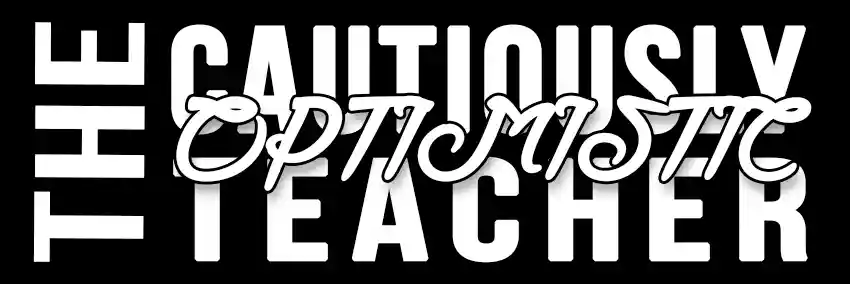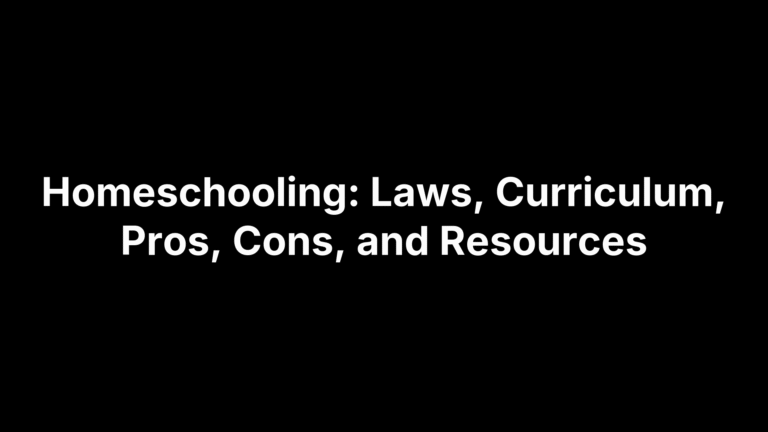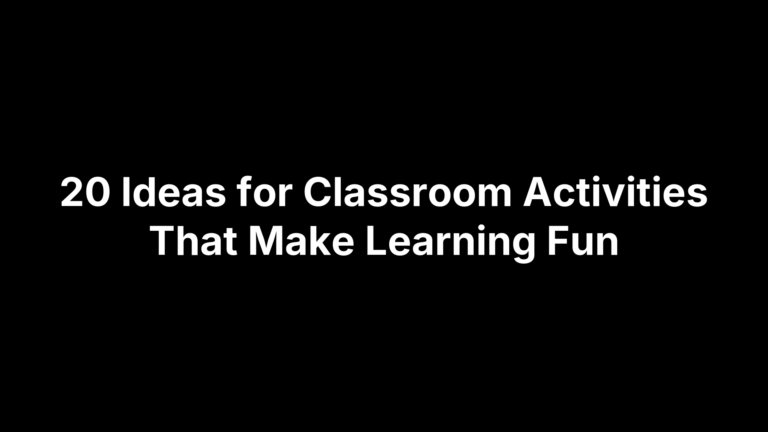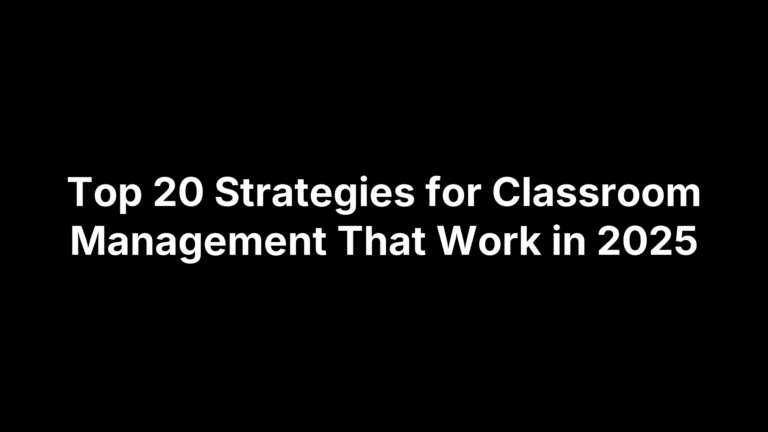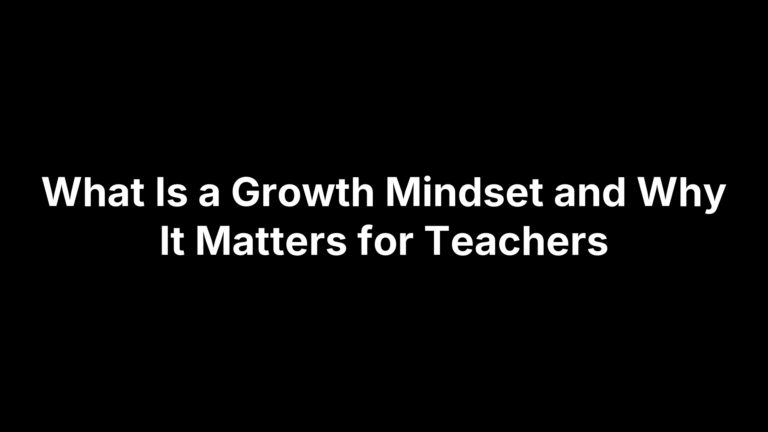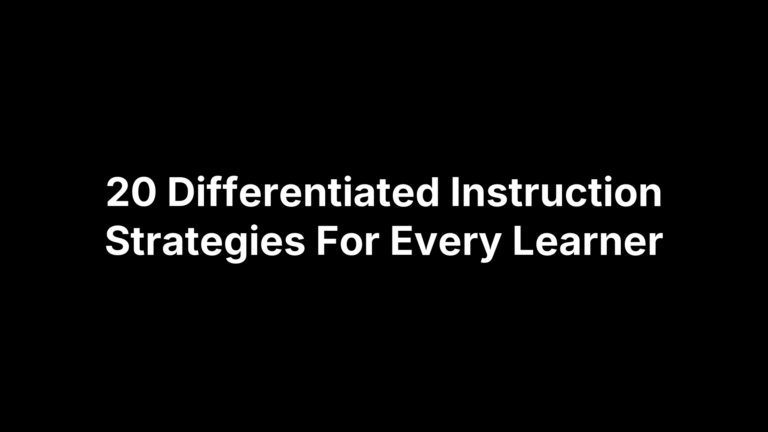Innovative Teaching Methods: 6 Ways to Boost Engagement
If your lessons are solid on paper but falter once the bell rings, you’re not alone. Mixed readiness levels, short attention spans, and a planning window that keeps shrinking can make even your best ideas feel out of reach. You need strategies that lift participation, deepen thinking, and reduce off-task behavior—without adding hours to your workload or requiring a classroom full of new tech.
This guide gives you six proven, classroom-ready ways to boost engagement—each with a quick on-ramp. We’ll show you how to leverage AI-powered differentiation with The Cautiously Optimistic Teacher, weave active learning into any lesson, make learning stick with project-based tasks, motivate with thoughtful gamification, reclaim class time with a flip, and ignite curiosity through inquiry and choice. For every method, you’ll get the what, the why, a 15-minute setup you can try next week, practical assessment ideas, and tools (most free or already at your fingertips). Ready to swap “covering content” for “anchoring learning”? Let’s get to work.
1. Leverage AI-powered differentiation with The Cautiously Optimistic Teacher
What it is
This innovative teaching method uses AI to tailor learning pathways to students’ readiness, interests, and support needs—without extra prep. The Cautiously Optimistic Teacher’s built-in tools generate leveled tasks, scaffolds, and extensions so every learner gets just-right work aligned to your objective.
Why it boosts engagement
When instruction matches readiness and honors choice, students stay in the sweet spot between boredom and overwhelm. Differentiated instruction, centered on readiness and interest, keeps all learners actively engaged by aligning tasks to their needs while you facilitate and coach.
- Right level, right now: Tasks meet students where they are, increasing persistence.
- Voice and choice: Interest-aligned options raise motivation and ownership.
- Timely support: Targeted scaffolds reduce off-task behavior and frustration.
Try it next week: 15-minute setup
Set a single objective, then use AI to tier practice and discussion so everyone participates with confidence.
- Define the goal (2 min): Choose one standard and success criterion.
- Tier tasks (6 min): Use the Differentiated Instruction Helper to create three versions: scaffolded, on-level, and extension.
- Make practice (3 min): Run the Worksheet Maker to build 6–8 aligned items per tier.
- Build checks (2 min): Use the Question Generator for 3 quick CFUs.
- Group smart (2 min): Flexibly group by readiness or interest; rotate as students show growth.
Assessment and feedback
Use short, visible checks to drive next steps while keeping momentum.
- Exit ticket: One prompt tied to the success criterion.
- CFU loop: 3 quick questions mid-lesson to regroup or release.
- Micro-conference: 60-second feedback per group using a single-point rubric.
Tools and resources
- Differentiated Instruction Helper: Auto-create leveled tasks and scaffolds.
- Worksheet Maker: Generate aligned practice in minutes.
- Question Generator: Produce checks-for-understanding and discussion prompts.
- Report Card Commentor: Turn notes into clear progress comments later.
2. Build active learning into every lesson
What it is
Active learning is an instructional approach where students do the cognitive heavy lifting—discussing, solving, creating, and checking understanding in short cycles. It favors hands-on tasks and frequent student-student and student-teacher interaction. Think quick problems, partner talk, brief debates, and whole-class pulses that surface thinking in real time.
Why it boosts engagement
When students work with ideas rather than just receive them, attention and retention rise. Research-backed active learning shows improved learning outcomes and stronger gains for students who have been historically underserved, while audience-response “checks” let you adjust instruction on the spot. The result is more voices, better thinking, and fewer off-task moments.
Try it next week: 15-minute setup
Embed a simple participation rhythm inside your existing lesson to make every student accountable for thinking and sharing.
- Prime (2 min): Pose one juicy question tied to your objective.
- Think–Pair–Share (5 min): Quiet think, partner explain, swap roles.
- Whole-class pulse (3 min): Quick poll or hand signals to reveal patterns.
- Apply (5 min): One problem or example students solve on whiteboards.
Assessment and feedback
Use visible thinking to drive micro-adjustments without derailing momentum. Start with a standards-aligned prompt, sample three pairs’ reasoning, then name one classwide strength and one next step. Close with a one-question exit ticket that mirrors the day’s success criterion.
- Evidence to collect: partner explanations, poll results, whiteboard solutions.
- Feedback moves: re-teach a misconception, highlight an exemplar, adjust groups.
Tools and resources
You don’t need new tech to run this; simple, fast feedback tools amplify impact and keep cognitive load on students.
- Audience response: Clickers or smartphone polls for instant checks.
- Mini whiteboards or paper tents: Rapid, low-stakes practice and share-outs.
- Question Generator (site tool): Drafts prompts and CFUs aligned to your objective.
- Timers and visible agendas: Keep cycles brisk and expectations clear.
3. Make learning stick with project-based learning (PBL)
PBL turns units into meaningful work by asking students to create something that solves a real problem or answers a real question. Instead of “covering” content, students use it—investigating, collaborating, and communicating to produce a tangible product that demonstrates understanding.
What it is
Project-based learning is a student-driven, hands-on approach where learners apply skills and knowledge to complete a real-world task over time. It emphasizes critical thinking, problem-solving, collaboration, and communication, with the teacher facilitating milestones, resources, and feedback along the way.
Why it boosts engagement
Because the work feels authentic and student voice matters, motivation rises. As students wrestle with complex tasks, they build deeper understanding and retain more—benefits widely associated with project-based, student-centered methods that require critical thinking and collaboration.
- Purposeful work: Products feel meaningful, not just “for points.”
- Ownership: Students make choices in process, roles, or product.
- Collaboration: Teams keep momentum and surface diverse ideas.
Try it next week: 15-minute setup
Pilot a mini-project inside an upcoming topic—small scope, clear deliverable, short timeline.
- Pick a problem (3 min): One relevant question aligned to your standard.
- Define a product (3 min): Poster, podcast, one-pager, or slide deck.
- Map milestones (5 min): Research, draft, feedback, final share.
- Assign roles (4 min): Manager, researcher, designer, presenter—rotate as needed.
Assessment and feedback
Use quick checkpoints tied to your success criteria, plus peer and self-reflection to cement learning.
- Single-point rubric: One column of criteria; add “glows/grows.”
- Checkpoint drafts: 5-minute conferences per group at each milestone.
- Reflection: 3 prompts on process, learning, and next steps.
Tools and resources
Keep setup light; use simple tools you already have and site helpers to speed planning.
- Question Generator: Craft guiding questions and checkpoint prompts.
- Worksheet Maker: Build research organizers and planning sheets.
- Differentiated Instruction Helper: Tier roles, texts, and scaffolds by readiness.
4. Increase motivation with gamified learning
What it is
Gamified learning applies game elements—points, badges, levels, and simple rewards—to everyday tasks and practice. As one of the most practical innovative teaching methods, it layers game mechanics on existing lessons to make progress visible and participation compelling without changing your core content.
Why it boosts engagement
Game features make effort and progress feel immediate and worth repeating. When students see clear goals and instant feedback, they lean in and keep going.
- Points, badges, levels: Visible progress fuels persistence.
- Clear challenges: Short, beatable tasks reduce avoidance.
- Choice paths: Optional “quests” boost ownership and buy-in.
Try it next week: 15-minute setup
Pick one routine you already run (warm-ups, stations, or exit tickets) and add light game mechanics.
- Name the “quest” and success criteria.
- Assign points for accuracy, effort, and help-giving.
- Create two badges (e.g., Accuracy Ace, Collaboration Captain).
- Set a simple level-up (e.g., 30 points unlocks bonus problem).
Assessment and feedback
Keep grades separate; use game data to guide instruction and celebrate growth.
- Quick CFUs earn points: Instant feedback, instant adjustment.
- Badge criteria = rubric: Award for evidence of the standard, not speed.
Tools and resources
Start low-tech and scale only if needed; the goal is fast signals and visible progress.
- Question Generator: Build challenge decks and bonus “boss” questions.
- Worksheet Maker: Turn objectives into leveled quests in minutes.
- Mini trackers: Whiteboard tally, sticker chart, or a simple spreadsheet.
5. Flip the classroom to reclaim class time for practice
Among innovative teaching methods, a well-run flip moves direct instruction to prework and frees class for coached practice, collaboration, and feedback. Instead of racing through content, you spend the bell helping students apply ideas, clear misconceptions, and build confidence.
What it is
A flipped classroom shifts first exposure—short video, reading, or interactive notes—to homework, then uses class time for problem-solving, discussion, labs, and small-group coaching. You act as facilitator, not lecturer, and provide an on-ramp for students who couldn’t complete the prework so no one is left behind.
Why it boosts engagement
Students control the pace of initial learning at home, then engage in active learning during class—talking, trying, and troubleshooting with you and peers. This model improves attention, makes feedback immediate, and increases time on meaningful tasks instead of passive note-taking.
- Self-paced input: Replays and pause points reduce confusion.
- Application in class: More reps with guidance deepen understanding.
- Real-time adjustment: Quick checks let you target support where it’s needed.
Try it next week: 15-minute setup
Start small: flip one concept, not a whole unit.
- Pick a single objective and success criterion.
- Record a 5-minute micro-lesson (slides + voice memo) or assign a concise reading.
- Use the Question Generator to create 3 prework checks.
- Set an entry ticket: students answer 1 of the checks on arrival.
- Plan two in-class tasks: one scaffolded, one extension, aligned to the objective.
- Prepare a catch-up card (key notes + example) for students without prework.
Assessment and feedback
Begin with the entry ticket to sort students into just-right tasks. Circulate with a single-point rubric, give 30–60 second feedback bursts, and close with an exit slip mirroring the success criterion. Track who needed the catch-up card and reteach in a warm-up next class.
- Evidence: entry tickets, in-class products, exit slips.
- Moves: regroup, model a sample solution, and release advanced learners to extension.
Tools and resources
Keep it lightweight and repeatable.
- Question Generator: Build prework checks and entry/exit prompts fast.
- Worksheet Maker: Create scaffolded and extension practice in minutes.
- Simple recording: slides with narration or a phone voice note.
- Whiteboards or shared paper for rapid, visible practice.
6. Ignite curiosity with inquiry and choice
What it is
Among innovative teaching methods, inquiry-based learning invites students to generate questions, investigate evidence, and present conclusions while you guide the process. Layering choice lets learners pick their path, source set, or product format, increasing autonomy without losing alignment to your objective.
Why it boosts engagement
When students pursue questions they helped craft and can choose how to show learning, motivation rises. The work feels meaningful, and collaboration and problem-solving become natural parts of the lesson.
- Student questions = buy-in
- Choice = ownership
- Evidence-use = deeper thinking
Try it next week: 15-minute setup
Run a mini-inquiry with a prompt and a simple choice board. Keep the arc tight so every student moves from question to claim with evidence in one period.
- Post a provocative prompt and model one example question.
- Students brainstorm questions, then vote on a “best to investigate.”
- Offer a 3-option choice board (text set, data set, or interview/observation).
- Groups gather evidence and create a one-slide or one-pager claim.
Assessment and feedback
Assess reasoning, not just answers. Use a single-point criterion for “clear claim, relevant evidence, sound reasoning,” give 60-second desk conferences, and close with a quick self-rating on confidence and next steps.
- Look-fors: specific evidence, quoted or cited
- Look-fors: a clear, defensible claim
- Look-fors: reasoning that ties evidence to claim
Tools and resources
Keep it lightweight: one prompt, a short text/data set, and visible timing. Use site tools to speed prep and support diverse needs.
- Question Generator: Craft inquiry stems and voting prompts.
- Differentiated Instruction Helper: Tier sources and scaffolds.
- Worksheet Maker: Build an inquiry log and 3-choice board in minutes.
Before you plan tomorrow
You don’t need an overhaul to feel the difference. Each method above turns passive minutes into productive reps with a clear objective and quick checks. Pick one class, one standard, and a 15-minute on-ramp. Run it, read the evidence you collected, and adjust. Small wins compound.
- Choose one method and one period; write a single success criterion.
- Prep three CFUs and an exit ticket; plan regroup moves.
- After class, note one strength, one misconception, and one tweak.
When you’re ready to scale, our tools shorten prep and sharpen feedback. Grab templates, quick-start guides, and AI helpers at The Cautiously Optimistic Teacher and join the weekly roundup. Teach tomorrow with clarity—and more students leaning in.
